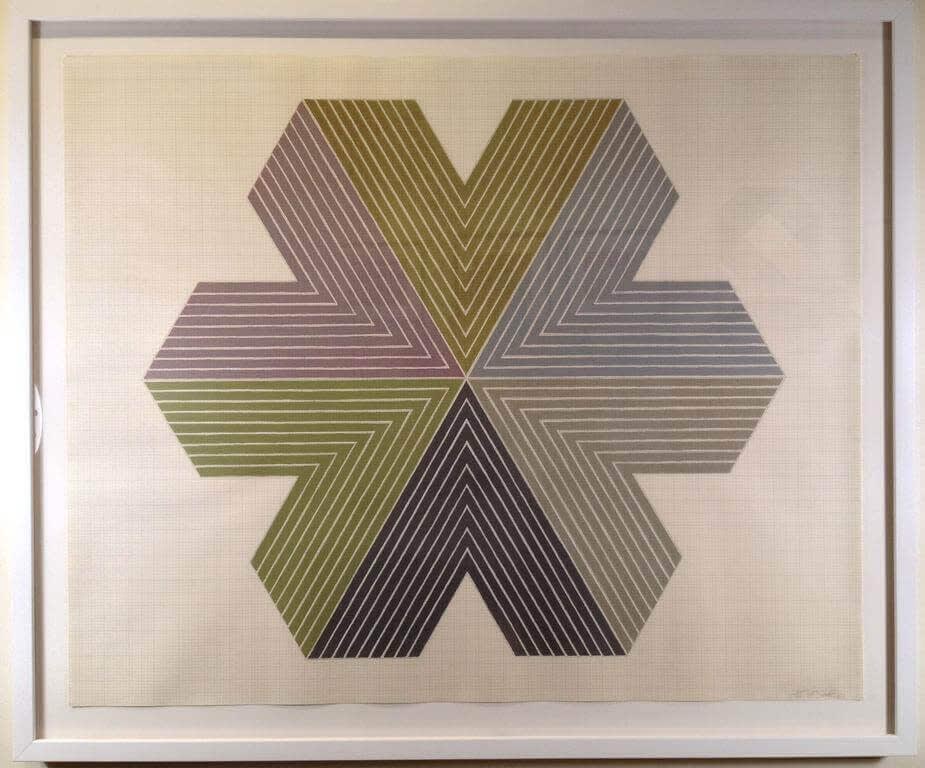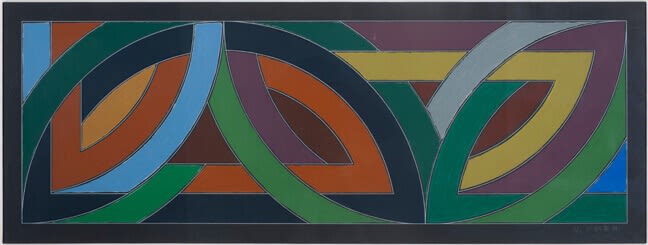After graduating from Princeton in 1958, where he majored in history, Frank Stella moved to New York and became one of America’s most treasured artists.
What you see…
Frank Stella helped to move American art through the tides of abstract expressionism by creating paintings that were not meant to represent pictorial or graphic image.
In a 1964 interview he said, “My painting is based on the fact that only what can be seen there is there. It really is an object. Any painting is an object and anyone who gets involved enough in this finally has to face up to the objectness of whatever it is that he’s doing. He is making a thing … all I want anyone to get out of my paintings, and all I ever get out of them, is the fact that you can see the whole idea without any confusion …What you see is what you see.”
Frank Stella wowed the art world with The Marriage of Reason and Squalor, II, which he painted for MoMA’s Sixteen Americans exhibition in 1959. Stella created the painting freehand. Using a housepainter’s brush, he applied black enamel paint to the canvas, dividing the surface of the canvas in half and painting stripes of black with a single, unpainted vertical line in the center.
The museum purchased The Marriage of Reason and Squalor, II during the exhibit, and it remains part of MoMA’s permanent collection.
Frank Stella: Jasper’s Dilemma
Stella said that a painting is, “a flat surface with paint on it – nothing more”. He gravitated to the works of Jasper Johns, who was, in the late 1950s and early ’60s, working with the canvas as a flat surface. As Stella moved from painting with black to painting with color, he focused on something the Johns said. “The more I work with color,” Johns said, “the more I start to see gray.”
This idea so resonated with Stella, that he produced a series of paintings and prints, titled Jasper’s Dilemma, in which he used bands of color to create tension and illusion, with the bands bouncing off one another. As Stella’s work progressed, his use of color, along with his use of composition, became more sophisticated and elegant. At age 81, Stella is still working in his New York studio, creating paintings, prints and sculptures.
Frank Stella at NSU Art Museum in Fort Lauderdale
Frank Stella: Experiment and Change is still on exhibit at Nova Southeastern University in Fort Lauderdale. The exhibit is part of the museum’s Regeneration Series, which was curated to explore the impact of World War II on artists in America and Europe.
The exhibition includes about 300 works, including paintings, relief sculpture and drawings, which show the progression of Stella’s work from the minimal to the maximal. Frank Stella: Experiment and Change will be on view through July 18, 2018.








